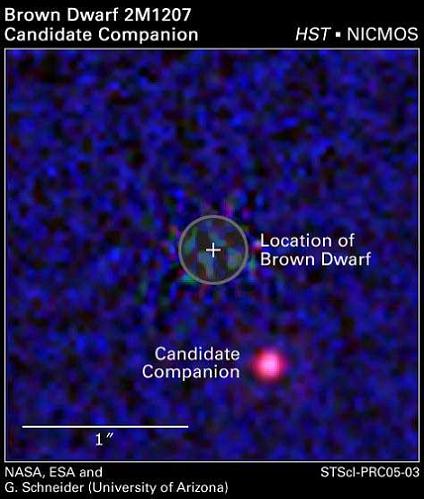More observations are needed to eliminate the XNUMX percent chance that this is a random background star

The Hubble Space Telescope is helping to confirm the possible discovery of a planet outside the solar system. This is the companion of a dull brown dwarf located 225 light years from here. The object was first discovered in April 2004 by astronomers using the large array of telescopes at the European Southern Observatory in Chile.
Astronomers believe that the mass of the planet is 5 times that of Jupiter and it shines too dimly to be a star.
The planet and its parent star are one and a third the distance between Pluto and the Sun, so it takes 2,500 years to orbit the star. If Hubble confirms the object, it could be the first planet outside the solar system to be directly imaged.
Because planets outside the solar system have not yet been seen directly, this observation requires Hubble's unique capabilities to make follow-up observations and test whether the object is indeed a planet.
A spectrometer that photographs multiple objects in the near-infrared range (nicmos)) made complementary observations in the short-wave infrared range, a range that cannot be observed from Earth. Photography in this frequency range is essential to characterize the physical nature of the bone.
The images taken by Hubble's Nikkem camera support the hypothesis that the planet candidate has a mass 5 times that of Jupiter, if indeed it orbits the brown dwarf. said Glenn Schneider of the University of Arizona. "The position measurements made using Nikmos, compared to those of the VLT, indicate that the object is a true companion of the brown dwarf with 99 percent certainty. However, additional observations of Hubble are needed to also close the remaining percentage that it is not an accidental background star and does not orbit the brown dwarf.
Schneider presented these observations on Monday at a meeting of the American Astronomical Society in San Diego.
For the news in Universe Today
